For economists, money talks. We expect (or would like to see) political parties put money behind the issues they profess to care about in their election platforms. The other side of the campaign is the election talk: the press releases, speeches and other statements full of buzz words that, in their own (much less precise) way, express party values. I decided to see how closely the two word streams—the platform budget items and the party talking points—matched up, and what they might tell us about political priorities.
To do this I’ve produced two word clouds per party. The first emphasizes the words that come up most often in party press releases between August 2 and October 5, excluding party and leader names, common words like “government” and “Canada,” and derivations. The second word cloud—call it a money cloud—expresses how each party plans to spend or raise funds based on their platform (Conservatives, NDP, Liberal, Green) and weighted by the amount of money totalled over whatever timeframe the platform publishes. (For the Conservatives I have also used the spring budget for my comparison.)
The Conservative Party
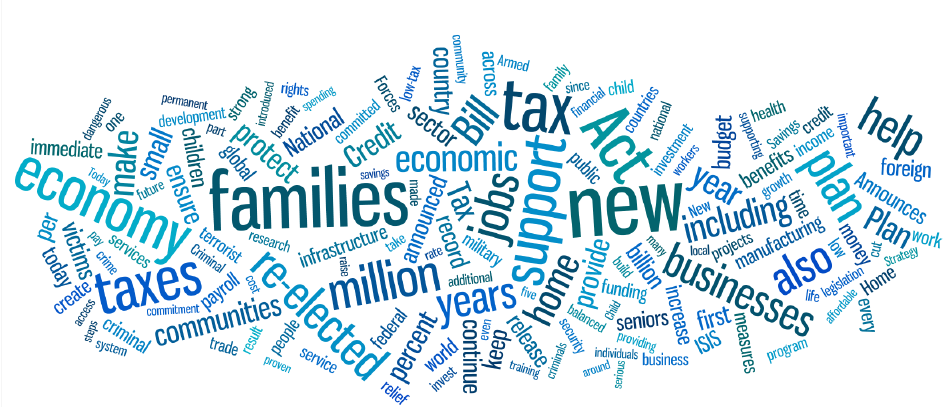


The Conservative Party emphasized “families” and “support,” to the press. "Taxes” and the “economy” figure prominently, with “Businesses” also featured, as is “new” and “Act.”
The tax and transfer changes introduced in the 2014 fall economic update and again in Budget 2015 dominate the money cloud. These include the introduction of income splitting, been critical of in the past. The Conservative money cloud also includes the cancellation of the “Child Tax Credit,” which helped pay for the $60-a-month “new UCCB” (Universal Child Care Benefit) for families with children. The “cut in EI premiums” from $1.88 to $1.49 (per $100 of insurable earnings) is a significant change as well. Several other parties don’t have that full decrease in EI premiums so I’ve included it here. “Cuts to small biz taxes” and “transit” spending also make an appearance, but a brief one.
The New Democratic Party
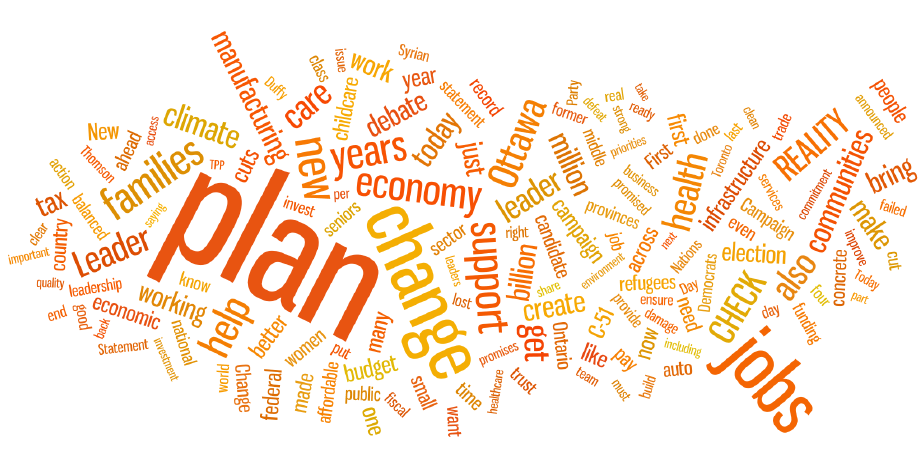

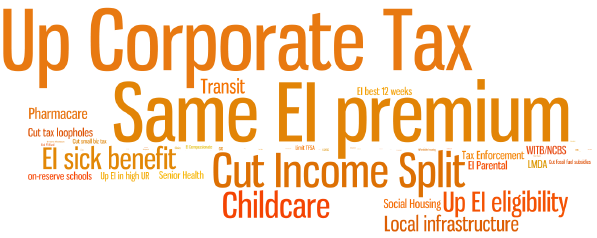
The NDP clearly wants the press to know it has a “plan” that involves “change” and “jobs,” the three dominant words in the word cloud. “Reality,” “check,” “families,” “help” and “health” are also prominent.
As the money cloud shows, the NDP relies on a 2% increase in the corporate income tax rate and “cut[ting] income splitting” as their main sources of revenue. Having the “same EI premiums” at $1.88 (per $100 of insurable earnings) instead of the scheduled drop to $1.49 allows the NDP to “up EI eligibility” and expand the “EI sick benefit.” “Childcare,” “local infrastructure,” “pharmacare” and “social housing” are all in there, but on a smaller scale.
The Liberal Party
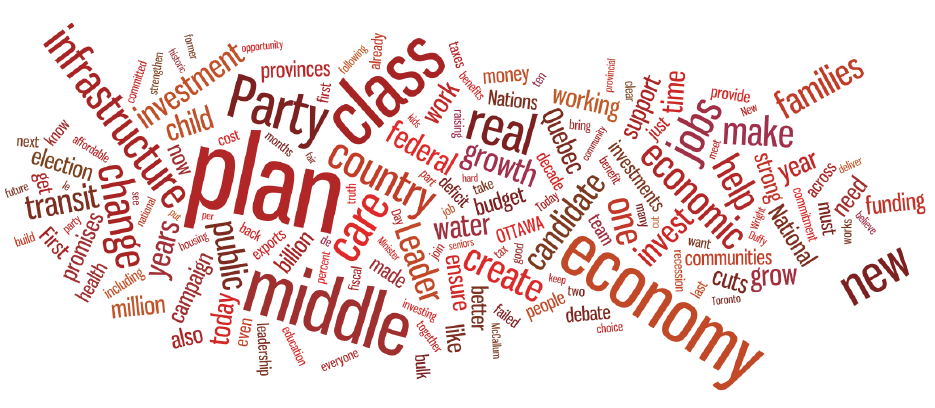


In the press release word cloud we can see that “middle” and “class” are clearly important (usually together), as is the “plan.” “Economy” and "infrastructure" are also prominent.
The Liberal money cloud shows the completely revised child benefit system is the party’s largest expenditure. I’ve represented the Liberals’ “child benefit” net of the UCCB cancellation, since otherwise there would be nothing in the cloud besides these two items. The swap between the “tax top 1%” new top tax bracket and the “middle tax cut” of lowered rates in the middle bracket is next, along with “cutting income splitting” (I discuss this in more detail here).
The lowering of EI premium to $1.65 instead of $1.49 with “not as low EI premiums” raises revenue for several EI-related programs, including “cut EI wait times” to one week, open “EI eligibility” to re-entrants, and “LMDA” (Labour Market Development Agreements) training transfers to the provinces. Infrastructure spending on “transit,” “social infrastructure” and “green infrastructure” is also prominent, which would be partially paid for with a “cut (to) tax loopholes” by examining the tax expenditures.
The Green Party
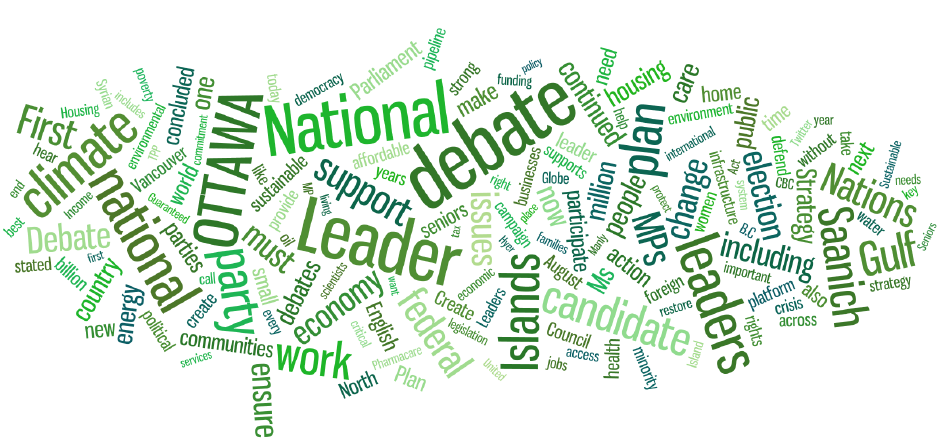


In the Green Party's public relations material, there is a focus on being a “leader” in “Ottawa” and “national.” The “debate” looms large, as does a focus on their leader from “Saanich” “Gulf” “Islands.” “Climate” is also prominent (big surprise) for the Greens.
The Green Party’s major program is a “carbon fee,” revenues from which would be refunded through “carbon cheques.” “Up corp[orate] tax” also raises money along with “legalize and tax marijuana.” This funds “infrastructure” and “free tuition” for post-secondary education.
Summary
These word clouds reveal what parties are talking about, but more importantly (for an economist) where money is going. As we say about the CCPA’s Alternative Federal Budget, party platforms, like budgets, reveal values. Spending preferences and allotments are political decisions, not purely economic ones. For example, in the Conservative money cloud “income splitting” (something that benefits relatively few people) could easily swap with “transportation” (something that benefits everyone). They are the size that they are due to political calculations.David Macdonald is a Senior Economist with the CCPA. Follow David on Twitter @DavidMacCdn.






